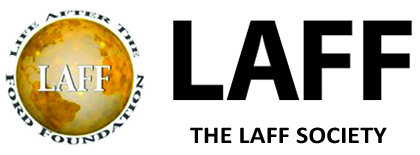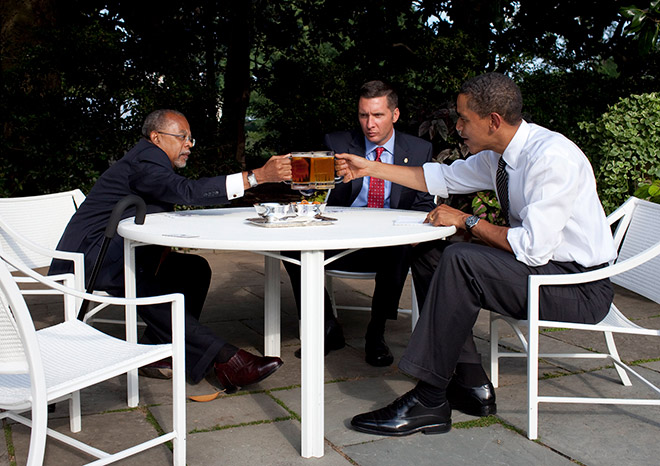NEWSLETTER
|
The Role of Communities in Resolving Disputes
The following two articles explore the persistent, divisive national problem that has taken on greater significance with the recent eruption of racial conflicts: the pressing need for “serious investments in conflict resolution in our communities”. Both stress the increasingly crucial role of local communities in creating “spaces” to bring people together, of finding opportunities to “listen, to heed and to heal”.
The first article, published elsewhere and re-printed here, makes a case for “earnest efforts to listen” by local leaders and “public actors”, for the need for such local change-makers to create the “spaces, the structures and the support” that are vital to lowering the risk of civil disturbances.
The second, written especially for the newsletter, provides essential background for understanding how actions taken over the last several decades helped create the framework that can make it possible to resolve disputes before they escalate and “threaten the fabric of the community”.
LET’S GO BEYOND THE CONFLICT AND TALK
By Linda Stamato and Sandy Jaffe
This article appeared originally on June 28 on the online site of The Newark (N.J.) Star Ledger and in its print edition and several other newspapers since then.
Overshadowed in the aftermath of the death of George Floyd in Minneapolis was an event in New York that was nearly as symbolic of America’s racial divide. A brief confrontation between a Black man and a white woman represented much of the tensions over the past few centuries, but it lacked the drama of law enforcement gone awry.
It should not be buried in history, though, because it offers a crucial lesson in lost opportunities.
Mere hours after George Floyd’s life was snuffed out under a policeman’s knee, a white woman in New York’s Central Park threatened to call police on a Black man. He had merely asked her to leash her dog, as required, in that area in the park. The man, Christian Cooper, turned out to be an avid birder and a board member of the city’s Audubon Society. He video-recorded what happened, including her angry threats to call 911—and her plea on her phone, “There’s an African American man threatening my life.”
Unlike most incidents, this one—because it was recorded—went viral when Christian Cooper’s sister offered it on Twitter. The video led to the white woman, Amy Cooper, being fired from her job, calls to ban her from the park and a steady stream of criticism as her intemperate, racist actions were repeatedly viewed.
There were no charges. But the video was chilling to many who watched it because things could have ended very differently for a man who seemed “out of place” simply because he was Black.
This encounter with racism, along with others in recent months, renewed national attention to the dangers—the marginalizing, dehumanizing and, for many, the routine reality—of simply “living while Black”.
Ending the story there, though, was a lost opportunity.
Cooper’s later observation that the incident perhaps should not have led to the woman losing her job sounded like an opening. An opening for conflict resolution, for using a community forum for facilitated conversations, for mediation and, perhaps, for restorative justice.
A mediated conversation involving both people, for example, could have been beneficial to both. Having an opportunity to talk and to listen, to absorb what an experience meant and the harm it caused, can lead to positive outcomes for those directly and indirectly involved, serving as a lesson for the public.
Recall the very public story of the arrest of Harvard Professor Henry Louis Gates, Jr. and the white police officer who saw a Black man attempting to break into a home in Cambridge, Mass.; Gates was trying to enter his own home. This encounter became widely circulated, much-discussed and reported on, and, as is often the case, interpreted differently, as in “the usual racist injustice”, for some, and “justifiable police work” for others.
Barack Obama, then America’s president, saw an opportunity. He invited both men to the White House, offered to “share a beer” with them, and created a space for a direct conversation between the two, to explore the harm caused to Gates, and the ridicule experienced by the officer, but also to give both an opportunity to listen to each other, and to show the nation that it is possible to generate something positive out of a negative encounter.
Surfacing and distributing evidence of a profound wrong to shame an offender accomplishes only so much. Seeing the wrong as an opportunity for potential gain, however, may benefit both the offender and the offended and, as noted, may well contribute to the public good.
There are many fraught encounters, much less visible, that need to be seen as opportunities for serious investments in conflict resolution in our communities.
When disputes take place between and among citizens, in neighborhoods, in public and private spaces, we need mediators from the community to help manage them effectively for the good of the parties and the communities of which they are a part. When differences in communities rise to a level that threatens the fabric of the community we need spaces for talking, for listening, for exchanging ideas, to find ways to improve relationships and help cement communities, not only to lower the risk of civil disturbances but to find opportunities to listen, to heed and to heal.
Many believe that there has been a fundamental shift in thinking and political will that may well make “this time” different.
Let us make it so.
We need to undertake earnest efforts to listen to the experiences of Black and brown people in our communities in order to understand, to assist and to make the changes we need. Along with public actors—mayors and civic leaders—we need leaders in the private sector, and those in “the third sector”—churches, mosques, synagogues, schools, universities, nonprofits and, especially, community foundations—to listen, engage and take on critical roles.
But, without the spaces, the structures and the support to provide opportunities for listening, for learning and for helping resolve conflict, we aren’t likely to see the changes in our communities that we so desperately need as a nation.
FORD’S ROLE IN MANAGING CONFLICT
By Linda Stamato
“....we’ve learned that we can have our differences without demonizing one another.” Henry Louis Gates
The base for much of contemporary conflict resolution was laid by the Ford Foundation over a significant period of time, starting in the late 1970s, within the portfolio overseen by Sandy Jaffe, as he was the Program Officer in Charge of Government and Law during his time at Ford.
National institutions came from that work, the National Institute for Dispute Resolution and the Fund for Research in Dispute Resolution among them. But the significant impact can be seen in the peer mediation programs still supported in elementary and secondary schools and college- and university-based conflict resolution programs, and in courts and communities across the nation.
Some efforts to deal locally with a national problem had begun earlier. Following the civil disorders in the 1960s, many community-based programs were created, some with Federal support, including the Community Relations Service in the Department of Justice, which deployed trained conflict resolution professionals to communities across the country to help manage conflict and to enhance a community’s capacity to prevent future conflicts.
Funds were made available, too, to support community policing, and political bodies in several states created Human Relations Commissions to help communities deal with housing and employment discrimination and to provide spaces for community conflict resolution to take place.
It was a “good time” for the Ford Foundation to take on a significant role and it did, supporting community justice centers based largely on the belief that resolving conflict rests mainly with the community itself.
Some of the earliest grants went to the Community Boards Program in San Francisco, the brain-child of the creative and inventive thinking of Raymond Shonholtz. He saw that providing options for managing community disputes, between and among neighbors, such as for minor offenses involving the police, could not only lead to more satisfactory outcomes, placing responsibility for the implementation of negotiated agreements in the hands of those directly involved, but could potentially have a broader impact, by building sustainable local communities.
Much later research supported that expectation. Indeed, members of communities that received training, and provided mediation assistance, were the very instruments for building and sustaining their communities.
Interest—and support—has waned, though, as Federal and state investment declined and foundations, essentially, moved on. Police have taken on much of the burden even as support for community policing has declined. There is a conflict resolution vacuum in the nation’s communities.
And so, decades later, it is hardly surprising that we see the value of having a mediated conversation involving both Amy Cooper and Christian Cooper, a variation on restorative justice, as potentially beneficial to both, demonstrating how an opportunity to talk and to listen, to “absorb” what an experience meant and the harm it caused, communicated directly and honestly, can lead to outcomes that can improve the lives of those directly and indirectly involved and serve as a lesson for the public.
When disputes take place between and among citizens, in neighborhoods, in public and private spaces, we need mediators from the community to help manage them effectively for the good of the parties and the communities of which they are a part.
When differences in a community rise to a level that threatens the fabric of the community, we need spaces for talking, for listening, for exchanging ideas, and to find ways to improve relationships and help cement communities, not only to lower the risk of civil disturbances but to find opportunities to listen, to heed and to heal.
Community forums can also prove vital for the discussion of issues and developing solutions to meet community needs, such as education, housing, parks and social services, thus involving citizens more directly in the governance of their communities.
Fortunately, the model program, started with Ford support, the Community Boards program, continues to provide just such forums for local involvement as it is well-integrated into the community, its efficacy repeatedly confirmed. The program’s approach is often called “popular justice”: using conflict resolution to build community, reflecting the close involvement of citizens in its design and functioning.
We need to see more of this approach to managing civic life.
Linda Stamato and Sandy Jaffe are co-directors of the Center for Negotiation and Conflict Resolution at the Edward J. Bloustein School of Planning and Public Policy of Rutgers University. Stamato has been a consultant for the Ford Foundation and Jaffe worked at Ford from 1968 to 1983 and was officer in charge of the Government and Law Project.
|


